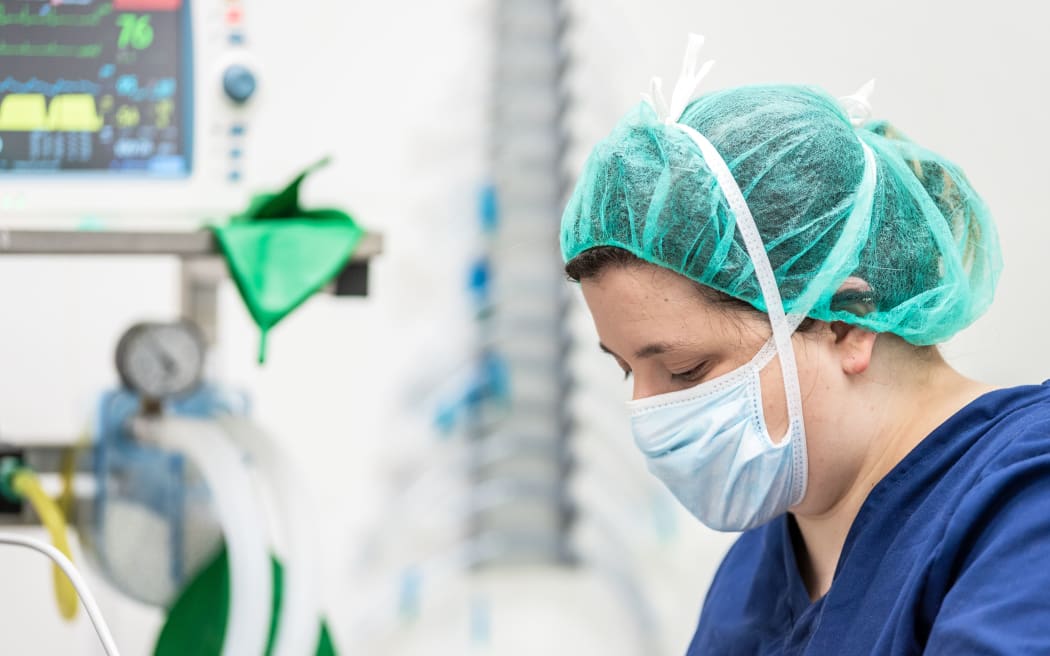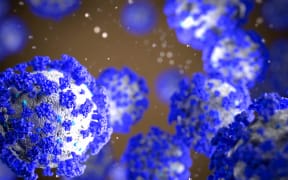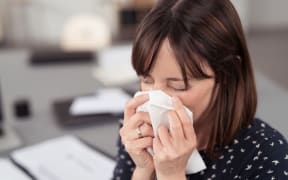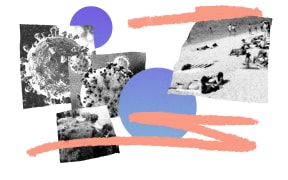
New modelling has been released by the Ministry of Health, suggesting a likely peak of about 1100 people in hospital with Covid on any given day. Photo: 123RF
The number of people in hospital with Covid-19 could hit a record high in the Christmas wave.
New modelling has been released by the Ministry of Health, suggesting a likely peak of about 1100 people in hospital with Covid on any given day.
That is more than both the first Omicron wave in March (1000 a day) and second in July (836), partly driven by more older people getting the virus for the first time.
The updated scenario shows community cases peaking at about 13,000 a day by the end of this month, up from 11,000 a day in the early modelling for this third Omicron wave.
Deaths were modelled to peak at about 22 a day.
The current wave has been notoriously hard to predict. That was partly because there are six Omicron variants - all with slightly different characteristics - in the mix, and because modellers did not know the impact earlier outbreaks had on immunity.
The ministry said the latest scenarios reflected updated information since the start of the wave, allowing modellers to get a clearer picture based on assumptions about a higher level of transmission, waning immunity and people's behaviour changing since restrictions were relaxed.
But there was still a relatively high degree of uncertainty about how the outbreak would play out.
"These models outline possible futures," a spokesperson said. "They are not inevitable and the steps each of us take to be prepared for Covid-19 this summer can make for a safer summer for everyone."
Antivirals, medicines and booster dose could both significantly reduce the number of people with Covid-19 that require hospital care.
The "variant soup" had made the outbreak even more difficult to predict in the early stages, but one was beginning to stick its head above the other five in the mix.
BA.2.75 is now the most common, making up 39 percent of genetically sequenced cases and about 58 percent of wastewater detections.
It has overtaken BA.5, which had dominated for five-and-a-half months and once made up more than 90 percent of all cases.
It now makes up 33 percent of cases, with BQ1.1 making up 14 percent, XBC and the original Omicron BA.2 on 5 percent, and XBB on 2.5 percent.
The ministry said BA.2.75 appeared to be more transmissible and could evade some existing immunity from other variants, but there was no sign it causes more severe illness.
'More guesswork'
Auckland University Network Contagion Modelling programme co-leader Dion O'Neale said hospital admission forecasts released by the ministry were based on a "pretty high estimate" of daily infections, and don't account for the effect of antivirals.
"We hope we'll be on the lower side of what's been in that recent Ministry of Health reporting."
Waning protection from of vaccinations over time, more older people contracting the virus, and the stronger ability of the dominant variant BA.2.75 to evade immunity from a prior infection were risks for increased transmission.
However this Omicron wave was more difficult to predict because 60 variants were circulating, each with a different ability to evade immunity, and there was little information on the effect of previous infections without the delayed infection prevalence survey.
"It's more guesswork than doing exactly the same modelling was this time a year ago."
It was possible initial forecasts of one in 20 people having the virus in the Christmas week could be slightly high, but there was still increased risk, he said.
Lifting public health measures in September and a change in individual behaviour at the same time led to a 20 percent rise in transmission, he said. In the absence of new public health measures there were still things people could do to reduce risk of getting the virus, such as wearing masks indoors and testing for asymptomatic infection.





